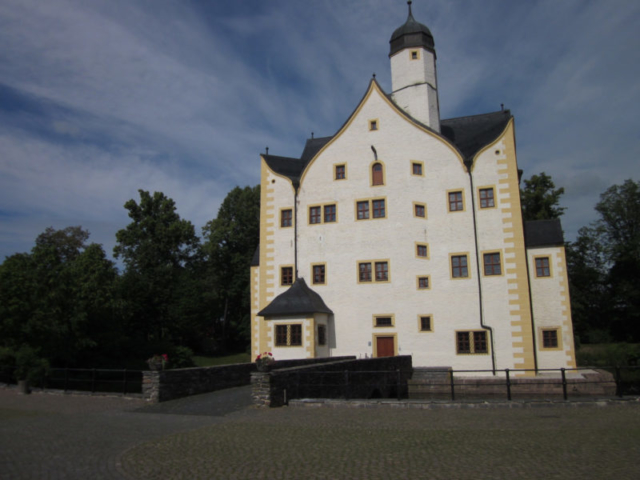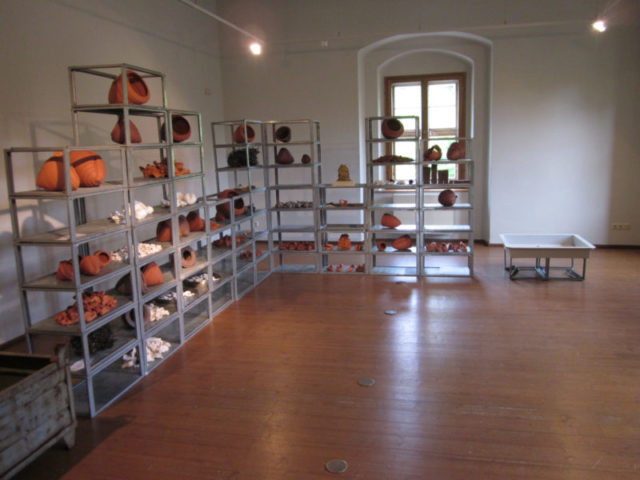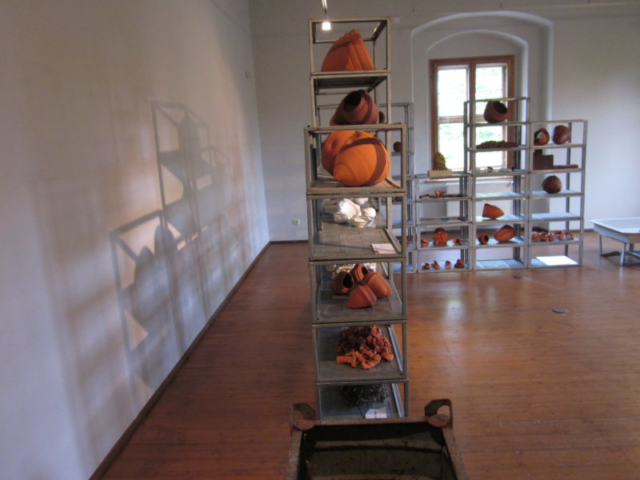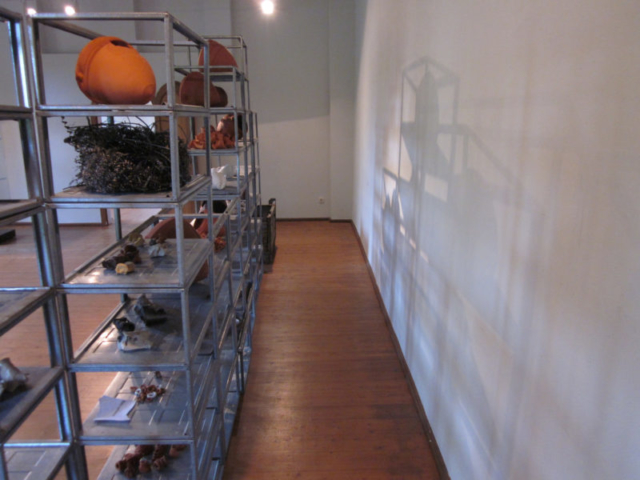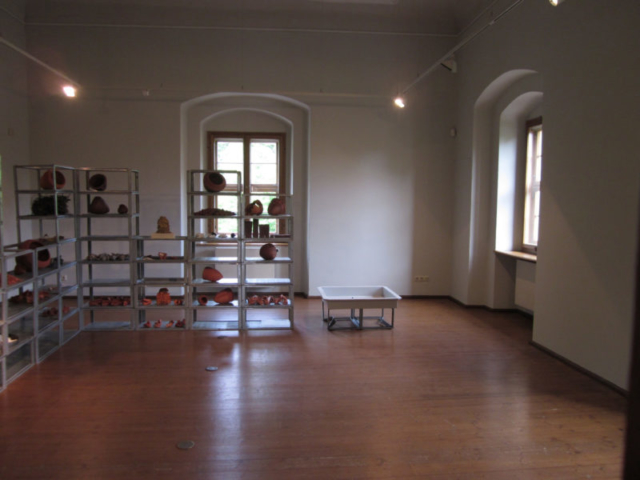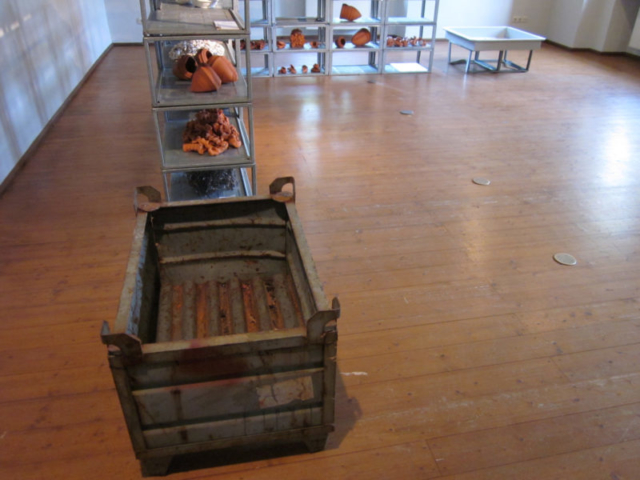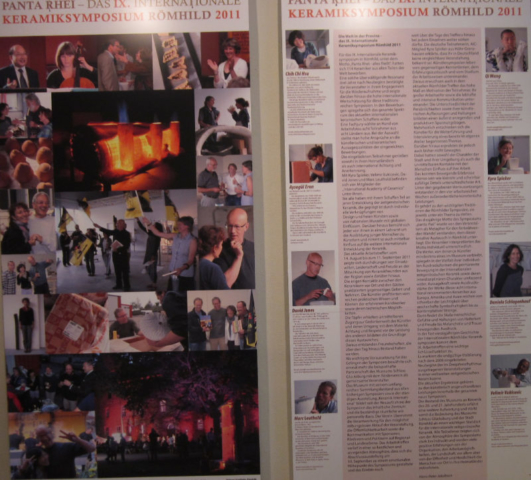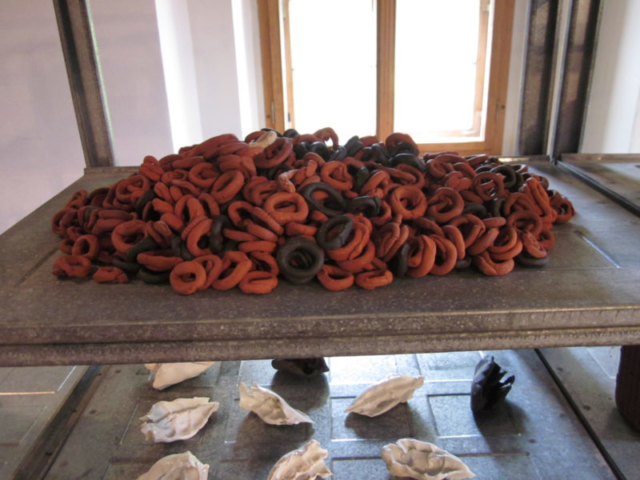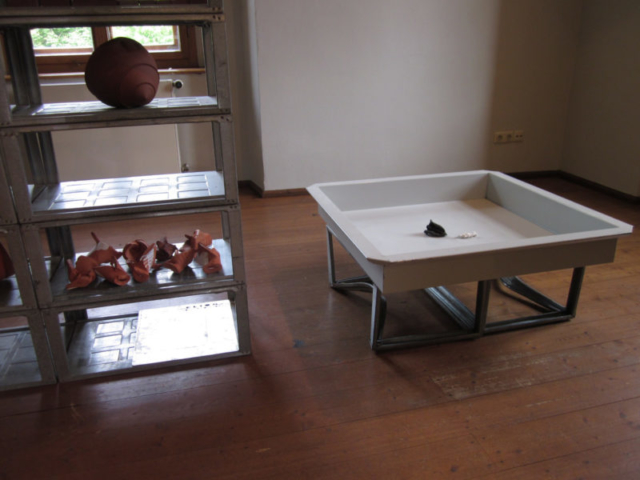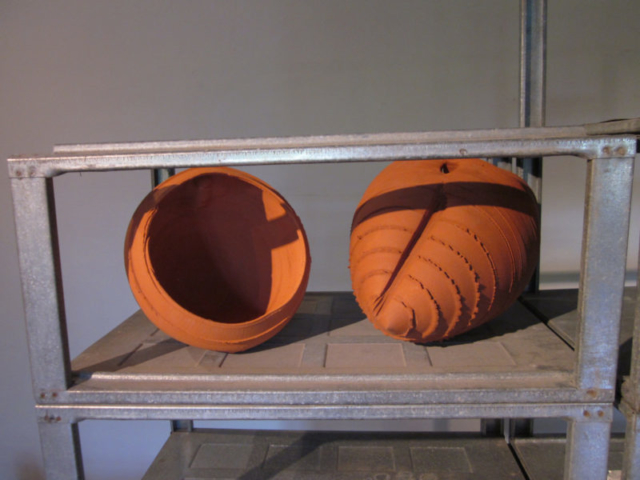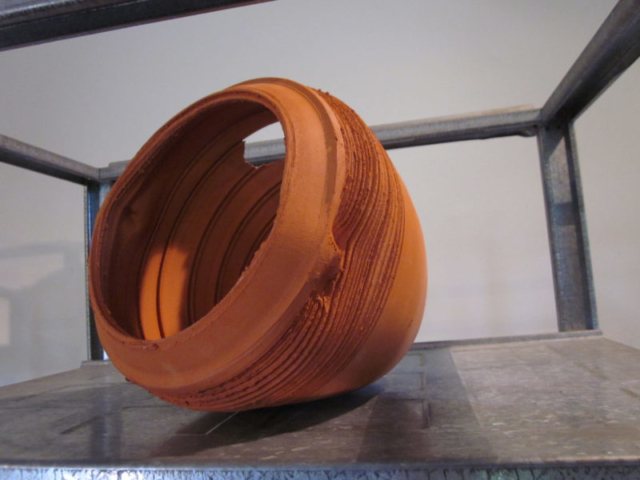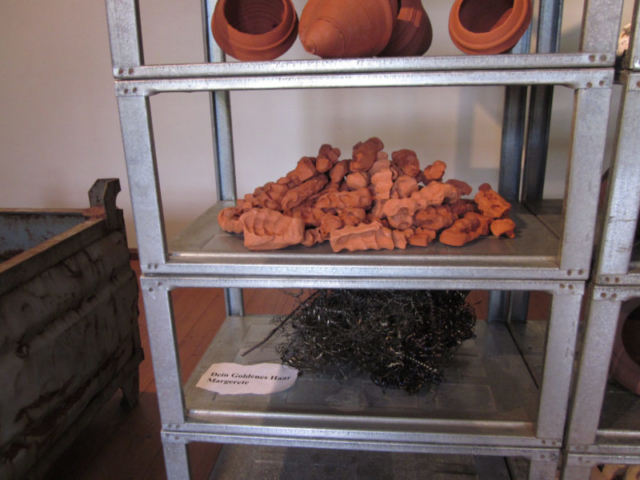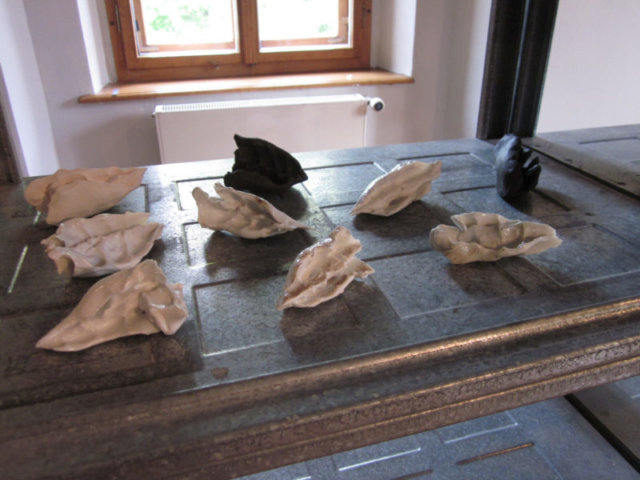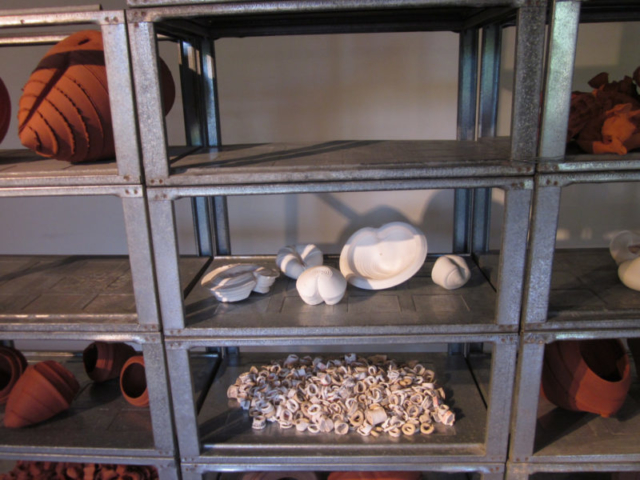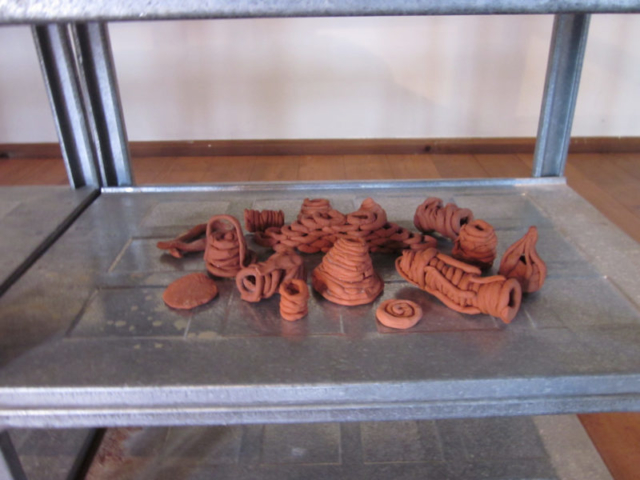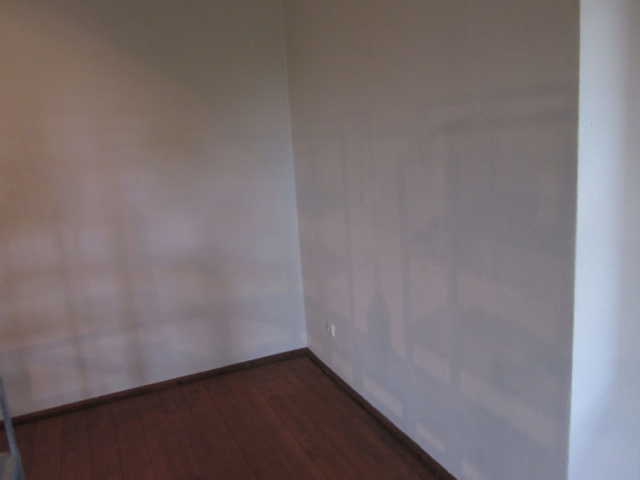Grenzerfahrung is a German word I was helped to create during my residency in Römhild in (the former East of) Germany; it means “Borderline experience”. I wanted this concept to talk about many sorts of limits, including:
- Geographical – the old, arbitrary political border between the former East and West of Germany.
- Race and Religion – The Nazis in the 1930’s created limits between people – on the one side their concept of the Aryan; on the other Jews, the Disabled, Homosexuals, people of different faiths. The Nazis instituted a system of violence that led to the planned systematic murder of millions of people that they decided were “Other”, including many members of my own family including my grandparents.
The work looked for ways to represent these concepts – in ceramic expression and through installing found, appropriated objects.
My mother was born in Germany, and escaped the fate of her parents in the murder camps on the Kindertransport, to the UK.
The installation was first made in 2011. I was received with enormous support, friendship and understanding by the residents of Römhild; it was these “ordinary” people who financially supported the symposium.
I felt the need to create positive works to counter the terrible negative associations of being in the country of my mother’s birth and the site of my grandparents’ deaths in the camps. I devised a series of collaborative works that endeavored to address the fundamental encounter of one person by another – in the simple formalized touch of the handshake: A roll of clay held between our hands was squeezed to create an exact print that represented that unique moment of coming together. Left out in the rain they could dissolve back to the clay they had come from; fired they could last longer than the duration of civilization.
———
2
The stacks of handprints touched torn fragments of the poem “Todesfugue” by Paul Celan. They were exhibited on a shelving system appropriated from the site of the symposium; they echoed the overcrowded bunks of the concentration camps. They also referenced the famous work Wirtschaftswerte (Economic Values), by Josef Beuys (an installation of food-stuffs from East Germany, juxtaposed with paintings from a collection).
I also made collaborative pieces with the friends I made in Römhild: clay rings – there were piles of wedding rings discovered in crates at the liberation of the camps, after they had been removed from victims by the Nazis to be melted down; they had to pay for their murder. Clay dug from the ground is the perfect material for such symbolic work – it has no intrinsic value and could be made ‘eternal’ through firing, or dissolved again in the rain and returned to the Earth. These two icons (the hand-print and the ring) require no skill in their manufacture – everyone can make them – but, made in collaboration they symbolise new beginnings and the forging of new relationships, born without prejudice.
Grenzehrfahrung. Chemnitz, Germany
